Paint is the general term for liquid that is used to add colour to the surface of an object by covering it with a pigmented coating. As a verb, painting means “applying paint”. Someone who paints is called a painter. Paint must be allowed to dry. Some paints such as watercolour, dries in a few minutes. Other paints, such as artist’s oil paint, can take days or even weeks to dry. Most other types of paints fit between these two. Many types of paint are best if they are put on in several layers. The painter must first prepare the surface so it is smooth, clean and dry. The first layer of paint is often an “undercoat” or “ground” which is smooth and sticks very well. The coloured paints are put on over the top. A house-painter who is using oil paint on a wooden window frame might use three layers of paint to give very good protection from the weather. Other types of modern house paint only need one layer, particularly on the inside. Artists using oil paint and tempera often use many layers to get just the right effect.
Paint is used to protect all sorts of buildings and structures from the effects of water and sun. Wooden buildings such as houses are usually painted because a coat of paint prevents water seeping into the wood and making it rot. The paint also helps to prevent the wood from drying out in the hot sun. Metal structures and objects of all sorts are painted to stop them from rusting. A very large steel structure such as a bridge must have a team of painters who keep the paint in good condition all the time. Bars pass through a powder spray booth where spray nozzles embed a dry epoxy powder.
As paint is exposed to harsh weather, it gradually gets thinner, depleting the gloss within paint Once the gloss is gone, the paint will not be able to reflect UV rays from the sun, and will deteriorate further resulting in peeling and bare spots.Color changes can also take place with exterior paint as it gradually loses its gloss, resulting in a powdery finish, known as chalking. Once paint reaches this state, it is visually unappealing and must be repainted.
Interior paints are another story. Because they are not exposed to the same weather conditions as exterior paints, high quality interior paints will last for years. If you are concerned about high traffic areas and an increase in durability, talk with us about specific finishes that will be helpful.
So how to judge a painting?
Painting is normally carried out for the following reasons:
- Protecting surfaces from insects, rain, solar radiation and other external factors
- Simpler maintenance: Well painted surfaces are easier to keep clean and safe
- Increasing the visual appeal of a surface
- Waterproofing
- Increasing surface durability
- Resistance to abrasion
- Resistance to fading
- Resistance to impact
- Retention of color and gloss
- Resistance to scrubbing/washing
Different types of paints for your structure protection
Oil paint
Oil paint is a type of slow-drying paint that consists of particles of pigment suspended in a drying oil, commonly linseed oil. The viscosity of the paint may be modified by the addition of a solvent such as turpentine or white spirit, and varnish may be added to increase the glossiness of the dried oil paint film. Oil paints have been used in Europe since the 12th century for simple decoration, but were not widely adopted as an artistic medium until the early 15th century. Common modern applications of oil paint are in finishing and protection of wood in buildings and exposed metal structures such as ships and bridges. Its hard-wearing properties and luminous colors make it desirable for both interior and exterior use on wood and metal. Due to its slow-drying properties, it has recently been used in paint-on-glass animation. Thickness of coat has considerable bearing on time required for drying: thin coats of oil paint dry relatively quickly.

Traditional oil paints require an oil that always hardens, forming a stable, impermeable film. Such oils are called siccative, or drying, oils, and are characterized by high levels of polyunsaturated fatty acids. One common measure of the siccative property of oils is iodine number, the number of grams of iodine one hundred grams of oil can absorb. Oils with an iodine number greater than 130 are considered drying, those with an iodine number of 115-130 are semi-drying, and those with an iodine number of less than 115 are non-drying. Linseed oil, the most prevalent vehicle for artists’ oil paints, is a drying oil. When exposed to air, oils do not undergo the same evaporative process that water does. Instead, they polymerize into a dry semisolid. This rate of process can be very slow, depending on the oil. The advantage of the slow-drying quality of oil paint is that an artist can develop a painting gradually. Earlier media such as egg tempera dried quickly, which prevented the artist from making changes or corrections. With oil-based paints, revising was comparatively easy. The disadvantage is that a painting might take months or years to finish, which might disappoint an anxious patron. Oil paints blend well with each other, making subtle variations of color possible as well as creating many details of light and shadow. Oil paints can be diluted with turpentine or other thinning agents, which artists take advantage to paint in layers.
Enamel paint
Enamel paint is paint that air-dries to a hard, usually glossy, finish, used for coating surfaces that are outdoors or otherwise subject to hard wear or variations in temperature; it should not be confused with decorated objects in “painted enamel”, where vitreous enamel is applied with brushes and fired in a kiln. The name is something of a misnomer, as in reality, most commercially available enamel paints are significantly softer than either vitreous enamel or stoved synthetic resins, and are totally different in composition; vitreous enamel is applied as a powder or paste and then fired at high temperature. There is no generally accepted definition or standard for use of the term enamel paint, and not all enamel-type paints may use it. Typically the term “enamel paint” is used to describe oil-based covering products, usually with a significant amount of gloss in them, however recently many latex or water-based paints have adopted the term as well. The term today means “hard surfaced paint” and usually is in reference to paint brands of higher quality, floor coatings of a high gloss finish, or spray paints. Most enamel paints are alkyd resin based. Some enamel paints have been made by adding varnish to oil-based paint.
Enamels paints can also refer to nitro-cellulose based paints, one of the first modern commercial paints of the 20th century. They have since been superseded by new synthetic coatings like alkyd, acrylic and vinyl, due to toxicity, safety, and conservation (tendency to age yellow) concerns. Art has been used also by Pollock with the commercial paint named Duco. The artist experimented and created many types of commercial or house paints during his career. Other artists: “after discovering various types of industrial materials produced in the United States in the 1930s, Siqueiros’ produced most of his easel works with uncommon materials which include Duco paint, a DuPont brand name for pyroxylin paint, a tough and resilient type of nitro-cellulose paint manufactured for the automotive industry”. Nitro-cellulose enamels are also commonly known as modern lacquers.
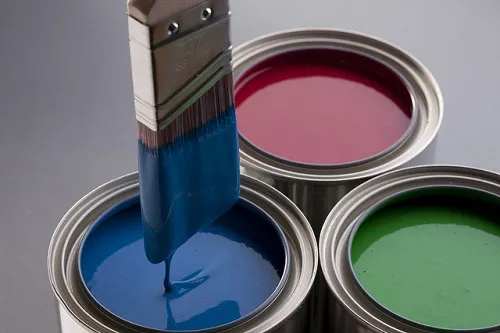
Emulsion paint
Emulsion paint consists of tiny polymer particles within which the pigments are trapped. The particles are suspended in water, then as the paint dries the particles fuse together creating a film of paint on the wall. Once this happens the polymer can’t be resuspended in water, which is why you can’t wash a water-based emulsion paint back off the wall once it has dried.
An emulsion paint has acrylic resin, (other resins too like SB-Latex, Poly Vinyl Acetate etc) in an emulsion form, acting as a binder or adhesive on the surface. Any paint needs an adhesive which sticks to the surface. Acrylic resin in this paint sticks to the surface and holds the other ingredients in place after drying. A paint contains Pigments, (which give the colour and protection from UV light to it), Solvents (which either dissolve some portion or improve the flow of paint) and finally various Additives (like anti skinning agent, anti-settling agents and surface active agents.)
An emulsion is a stable suspension of an oil phase in a water phase. We know that oils and water do not mix. So some surface active agents are added to improve the stability of the suspension of oil in water. In the case of acrylic paints, the acrylic resin (Oily Phase), along with the finely ground pigments embodied in it, are kept in a suspension of water. For this purpose some special surface active agents are used which are called Emulsifiers.
When this paint is applied on a surface, the water evaporates leaving the oily acrylic resin on the surface. The drying of acrylic paint could be either by evaporation of solvents alone in the case of a thermoplastic acrylic resin. However the modern technology has introduced self cross linking acrylic polymers and also cross linking agents to dry the acrylic resin into a 3D network. This results in the cross linking of the acrylic binder, thus leaving a strong and scratch proof coat of paint. The acrylic emulsion has more than 50% of water in it and it is further diluted to give it a better flow. With so much water in it, it is imperative that the water should go out of the system faster, once applied. If the water remains for a long period, the paint may not dry, may sag or the acrylic resin will not be exposed for cross linking. So the best surface suited for it is the walls and panels which have Cement or Plaster of Paris. The cement surface is porous and absorbs the water fast. Hence mostly it has been applied on walls or cement panel boards.

Cement Paint
Cement paint is water based paint. It is an economical exterior and Interior wall finish.Cement Paint is otherwise known as concrete paint, cement paint is durable and water resistant. The main ingredients of the paint are white Portland cement, lime, and some pigments. Apart from that, this paint contains water repellents, fungicides, fillers, and accelerators. It comes in the form of a white powder that is mixed with water, before application.
It is mainly used to decorate exterior surfaces, but can also be used for interior decor. Apart from enhancing the looks, this paint is also useful for covering up stains. Cement or concrete paint is used extensively for patios, garages, driveways, sidewalks, and concrete furniture. Even the exterior surfaces of huge industrial buildings are found to be coated with this paint.
Cement paint is mostly used to cover those surfaces that are subjected to frequent weather changes and heavy use. This shows the popularity of this product, which comes in different types. While epoxy concrete paint is preferred for surfaces, like garage floors; another type named silacote is recommended for newly constructed surfaces that are not painted. Epoxy cement paints are useful in preventing oil and grease stains, whereas silacote is claimed to form a special bond with concrete. However, silacote is not usually used for floors.
In case of concrete basement flooring, another type of cement paint, named deckote is mostly preferred. This is because, deckote is found to be resistant to abrasion, and is ideal as a concrete floor paint. Cement paint is available in different colors. As far as the colors are concerned, it has been observed that shades of dark colors, like gray and brown, are commonly used.
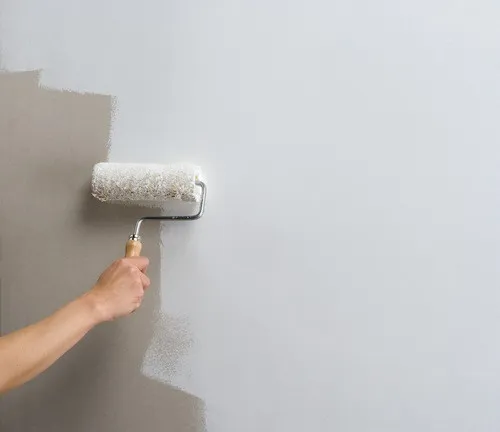
Bituminous paint
Bituminous paints are made of bitumen or coal tar which is dissolved in mineral spirit or naphtha. Bitumen is also known as asphalt which is a sticky, black, and highly viscous liquid or semi-solid form of petroleum. A bituminous coating is a type of coating used to build a vapor-proof and flexible protective coat in accordance with its formulation and polymerization grade. A bituminous coating’s flexibility and protection against vapor and water can be influenced by the polymer grade as well as reinforcement of fiber.
The most common applications of a bituminous coating include areas that are beneath screed wet. It is an excellent protective coating and waterproofing agent, especially on surfaces such as concrete foundations.
A bituminous coating can be used both externally and internally on carbon steel pipes. It is usually black, and when applied properly, the bituminous coating offers outstanding cathodic protection needed for almost all structural steel pipes situated underground.
A bituminous coating is regarded as one of the least expensive ways to provide cathodic protection to pipes. It is also the least complex coating process, making it suitable for casing pipes like in road bore.
Bituminous coatings are mainly composed of hydrocarbon molecules. Such molecules are elongated, making movement difficult. Therefore, bitumen is solid especially at ambient settings. However, it flows very slowly and is very viscous.
Almost all bituminous coatings are ready to use and free from solvent. These are chemical- and UV-resistant, making them reliable protective coatings against wear and corrosion. It can be applied through various methods using a roller, brush or sprayer.
It works impressively in waterproofing surfaces, especially on surfaces that are in direct contact with seepage water, moisture and non-pressurized liquid or water.

Aluminum paint
Aluminum paint refers to a paint that is solvent-based and filled with aluminum flake. It is a protective metallic finish used on well-prepared metal surfaces like storage tanks, roofs and pipework. This paint can withstand temperatures up to 302°F (150°C). It is a good heat and light reflector as well as it resists water permeability.
Aluminum paint produces a genuine aluminum finish and it is highly resistant to rust and corrosion. It is very suitable for restoring old or rusted aluminum or steel objects in industrial areas. It is often used for coating industrial equipment and corrugated sheets in industrial areas.
Aluminum paint is one kind of coating paint produced from aluminum paste and a film-forming vehicle (e.g., varnish). It consists of both a resin base and solid flecks of aluminum. The resin helps the paint to flow and gives it durability and strength. The aluminum flakes produce a shiny metallic finish.
Most manufacturers only produce one shade of aluminum-based paint, one with a silvery finish. Some also add different pigments to produce other paint shades. Oxidation causes the finishes to darken over time irrespective of the colors used.
This paint is used on a variety of materials: metals, wood, and masonry. This paint can be easily brushed, rolled or sprayed onto the surface. It is suitable for both indoor and outdoor painting.
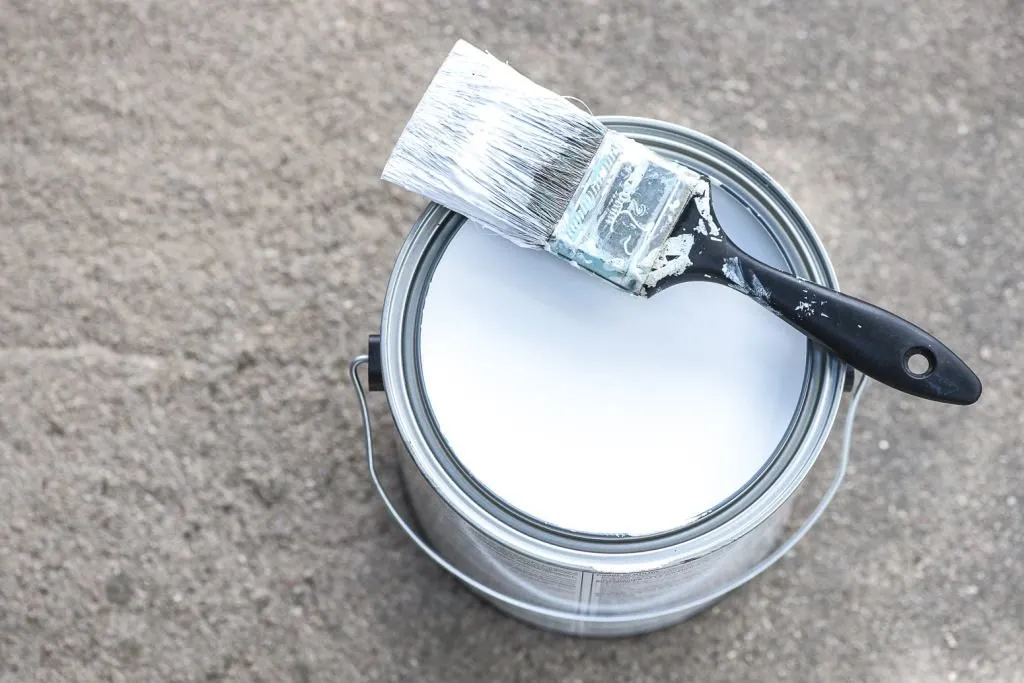
Anti corrosive paint
Anti corrosive paint is a composition of corrosion resistant pigments such as zinc chromate, lead chromate, zinc oxide, zinc dust, zinc chromate, or red lead. Linseed oil is used as a binder in the anti corrosive paint.
Anti corrosive paints should have quick drying and hardening properties. It has good abrasion resistance, good rust prevention, water resistance and good impact resistance. It is a cheap and long lasting corrosion protection.
Anti corrosive Paints are applied on metallic surfaces. It is also applied on ferrous metal, cast iron and steel surfaces. Anti corrosive paints are used for preservation of structural steel work against acid fumes and adverse weather conditions. It protects the metal components against degradation due to moisture, salt spray, oxidation or exposure to various weather conditions and industrial chemicals. In houses, they are used for painting steel roof trusses or M.S. railings for staircases, door frames, balconies, window grills, compound gates and so on.
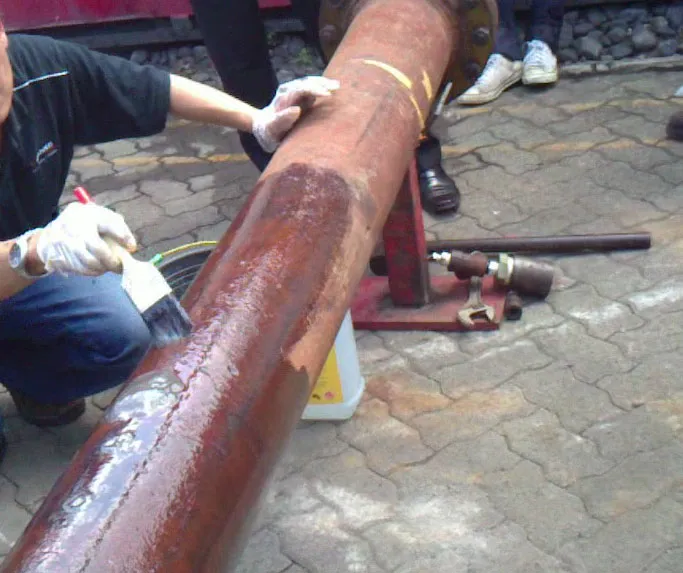
Rubber paint
Rubber paints form a flexible coating that provides durability and protection from moisture, extreme temperatures, chemicals, sunlight, rust and impact. It also offers insulation against vibrations and reduces noise. Rubber paint is used in a variety of applications and can be applied to wood, metal, concrete, fiberglass and plastic surfaces. Available in different colors, rubber paint may be applied by brush, roller or spray.
Specific uses include waterproofing decks, roof tiles and gutters, lining swimming pools, fish ponds, wooden or concrete water tanks, protecting mounting brackets, clutch and brake levers, metal studs, rocker panels and plastic fenders, and re-coating tool handles.
Cellulose paint
Cellulose paint is produced from celluloid sheets, amyl acetate and photographic films. Adhesion can be improved by adding castor oil, and surfaces can be easily cleaned and washed once the paint has dried. This type of paint is characterized by its quick drying, smooth finish and hardness, while offering resistance to water, smoke and acids. Thanks to its properties, cellulose paint is commonly used in cars and airplanes.
Cellulose paints with plastic surfaces, as in larger quantities with longer exposure, this paint can actually cause plastic to melt. However when applied as outlined above the paint dries before any damage can be done to the underlying plastic, enabling the advantages of Cellulose paints to be enjoyed on this material.
Plastic paint
In some countries paints based on water-based emulsion polymers (mostly acrylates) are named as plastic paints or latex paint. This is because the polymer in the emulsion is thermoplastics (melts with heating), different from paints based on thermosetting polymers, such as alkyd resins, polyester (unsaturated), and epoxy resins. While plastic paints are water based, not all water-based paints are in the class of plastic paints; for example, water-based PU paints.
Plastic paints are quick to cure, washable, and more durable. Plastic paints are washed by water for minimal fuss and they are applied in a single coat of paint. These are lightweight and easier to carry from one place to another.If you are trying to brighten up your exteriors then use plastic paints which contain solar reflectivity technology to reduce heat absorption in walls. As a consequence, lower temperatures in walls cut down the air conditioner bills in summers.
Furthermore, they are highly resistant to low-temperature, dirt-pick up resistance, resistant to tear, and low water absorption capability. So emulsion paint selection is a tricky task for long lasting protection. Plastic emulsion paint is water-based acrylic wall paint and well known for its smooth type of finish which adds high washability properties in addition to non-objectionable odor, humidity resistant as well. Plastic paint is mostly used in high-class areas including auditoriums, showrooms, theaters etc.
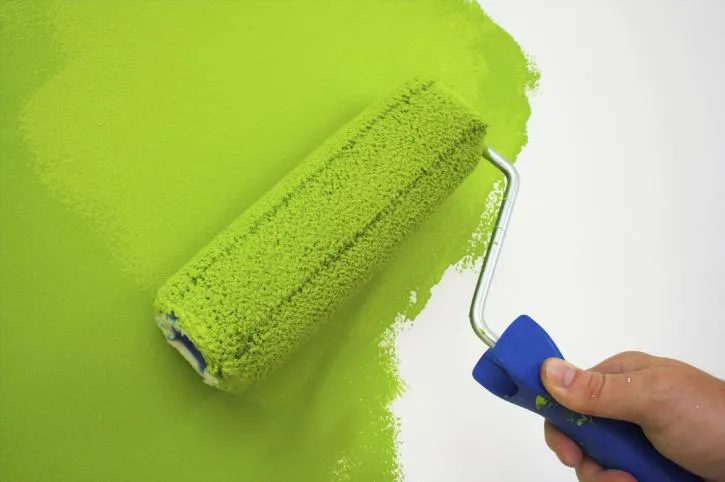
Silicate paint
Silicate paints are inorganic zinc-rich paints that have high content of zinc present in them and are non-flammable. The silicate present in these paints acts as a mineral binding agent, imparting these paints with a strong long-lasting bond with the substrate material. Such paints are considered to be environmentally friendly, durable and weather resistant.
Unlike the usual coating materials, there is no film formation on the substrate material because these paints make a bond directly with the substrate materials. The result is a highly stable, light, fast and durable coating, with particularly convincing long-lasting color and natural effect. Silicate paint is also known as silicate mineral paint or mineral paint.
Two relevant mineral binders play a role in the field of colors: Lime and silicate. Under influence of carbon dioxide, lime-based binders carbonate and water silicate-based binders solidify. Together they form calcium silicate hydrates.Lime paints are only moderately weather resistant, so people apply them primarily in monument preservation. Mineral colors are commonly understood to be silicate paints. These paints use potassium water glass as binder. They are also called water glass paints or Keimfarben (after the inventor). Mineral silicate paint coats are considered durable and weather resistant. Lifetimes exceeding a hundred years are possible.
Casein paint
Casein paint has been used since ancient Egyptian times as a form of distemper paint, and is still used today. One of the qualities that artists value casein paint for is that, unlike gouache, it dries to an even consistency, making it ideal for murals. Also, visually it can resemble oil painting more than most other water-based paints, and works well as an underpainting. Casein paint loses its solubility with time and exposure and becomes water-resistant. It is suited most to inflexible surfaces, including furniture. It can be buffed to a soft velvet finish when dry, or varnished for a gloss finish.
It generally has a glue-like consistency, but can be thinned with water to the degree that fits a particular artist’s style and desired result. It can be used on canvas panels, illustration boards, paper, wood and masonite. Because the dried paint film is inflexible and brittle, it is not appropriate for heavy impasto on flexible supports such as canvas. Canvas laminated to board is more suitable. Casein paint is reworkable and can be used for underpainting. It generally dries to a matte finish.
Conclusion
Painting enhances the look of buildings, it is a common element of renovation projects. However, paints have additional uses beyond improving appearance. Knowing the performance features of each type of paint is important to select the best product for each application.
Source: repaintnow.com, quora.com, nuroil.com, sealxpert.com, plasticsmakeitpossible.com



